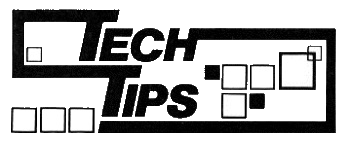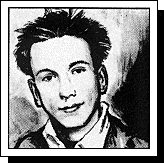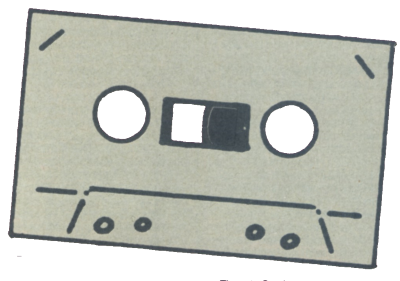


Spring has been fruitful for the Spectrum market this year, with a flood of new +3 utilities, a conversion of ZX BASIC for the Amstrad CPC range, and signs of Amstrad’s long-forecast shift into the computer music market. SIMON N GOODWIN reports
ORIGINAL SOFTWARE for the Spectrum +3 is flooding onto the market at last. In the last few days I’ve received three new serious programs from Tasman Software, a clutch of utilities from ZX Guaranteed, and news of the latest +3 titles from Lerm, Betasoft and HiSoft.
Most importantly, Locomotive Software have at last put the CP/M Plus operating system on the Spectrum. This move has been predicted since 1982, although it was not technically feasible until the launch of the +3. CP/M doubles the size of the Spectrum’s software-base at a stroke, and changes the +3 from a specialist games box into a bargain-priced general-purpose computer.
At last it looks as if the +3 is here to stay, despite its high price, technical quirks and lack of compatibility with older Spectrums. Software houses are breaking away from the ‘toy market’ image, taking advantage of the +3’s standard ports, and bringing Spectrum users ‘serious’ applications software.
It’s not yet clear how this will affect the main Spectrum market. Machine-specific games will always dominate Spectrum software sales by volume, because — as publishers know well — they are disposable products in an ever-changing fashion market.
The +3 is a valuable part of Amstrad’s range, but it’s a hybrid product: a CPC/Spectrum clone rather than a true Spectrum. At least for the time being, if you only want to use Spectrum-specific hardware and software, you’re better off with a +2 and a Plus D or Swift Disk — but the +3 is gaining a unique character.
It’s interesting that Amstrad have put the price of the PCW 8256 range up to around twice that of the +3; they seem to be protecting the Spectrum’s status on the borderline between games and serious computing.
There are strong signs that Amstrad have chosen a new direction for their mass-market entertainment products. If you’ve been paying attention over the last three years you will not be surprised to hear that they’re moving into music-making. DIY music is going to be a very, very big hobby, and an extension of home computing as distinct and popular as game playing or word processing.
After the +2A — the +3 with cassette — it looks as if the +4 will have add-on music hardware, probably similar to the RAM Music Machine hardware designed by ex-Sinclair staff at Flare Technology. No-one — even at Amstrad — knows when this will appear as I write, and the first Amstrad home-made music product is not a computer.
The Studio 100 started to get TV advertising in April, when it reached a few high-street shops. It’s a four track tape recorder, which lets you build up a stereo recording from up to 10 parts, recorded separately. It also includes a six channel mixer, to combine sounds and effects, four grotty microphones, speakers, uncomfortable headphones, an echo generator and a complete music centre — including a second tape deck, turntable and a three-band stereo tuner.
There’s an ominous ‘DATA’ connector on the back and the manual — by +2 manual editor Ivor Spital — just hints that it is ‘reserved for future Amstrad add-on products’ — believe it!
The Studio 100 is a fabulous peripheral for a sampler or SpecDrum. At £300 it’s an expensive toy, but excellent value. The sound quality is not brilliant, but tolerable, as you’d expect from Amstrad.
At first, the Studio 100 is sure to sell well for other reasons. Staff in my local Currys cynically reckon most punters won’t know what it’s for, but they’ll buy it because it has more knobs and switches than anything else in the shop: 33 knobs, 7 faders, 22 switches, 21 buttons, 17 sockets and a lever!
Once people have got it, they won’t be disappointed, as long as they can find time to play with it. We can expect a steady stream of interactive music products from Amstrad within the next few years.
IN THE JULY issue I plan to survey lots of the +3 software previewed in this issue, concentrating on new serious software — the business and programming tools that have been denied to Spectrum owners for the last five years. This will be good reading whether you’ve already got a +3, are thinking of upgrading, or just want to know what the new machine can do that the old Spectrum could not.
Don’t be put off if you’re still among the majority with a 48K system. I’ll continue to cover the original Spectrum models, and cassette 128s, in this column. Next month I hope to announce some Tech Tape enhancements, and news of Lerm’s cheap but powerful Z80 programming tape, set to break the monopoly of HiSoft’s DevPac. Don’t miss CRASH 54!
BETASOFT hope to have +3 BetaBASIC finished in the next few weeks. They’ve been waylaid for a while by an experimental project — converting the ZX BASIC language to run on the Amstrad CPC range!
The resultant £9.95 program starts by loading a copy of the Spectrum’s 16K ROM from tape. To avoid copyright problems, it’s up to you to save the copy from your own Spectrum, by typing: SAVE "ZX 48K ROM" CODE 0,16384
Betasoft’s code can load and save Spectrum-format tape files on the CPC. ZX BASIC programs work fine, although slightly slower than they run on the Spectrum. PEEKS and POKEs are compatible, as are most ROM calls, but few machine code games will run because IN and OUT cannot find the Spectrum’s keyboard and display ports. COPY drives any Epson printer.
There are two display modes. One lets you use four colours anywhere on the screen, with NO attribute clash. The other emulates the Spectrum display; again it only allows four colours with BRIGHT or FLASH but this time it simulates the effects of attribute clash, so that even POKEs to the display area work!
The CPC display uses 16K of memory, so it’s not as fast as the Spectrum’s 6.75K. 16K is taken from the program area on a 64K computer, so you can only get about 20K for ZX BASIC, but you get the full 41K Spectrum program area on a CPC 6128.
I’VE RECEIVED LOTS of new and revised +3 programs recently, so I’m planning an in-depth survey next month. For the moment, here’s a taster...
HiSoft have new Pascal and C compilers, in two versions. The +3 DOS versions support Spectrum colour and sound and cost £35. The CP/M compilers cost £50, but come with a screen editor and let you develop programs for other CP/M machines.
At the same high price they offer CP/M DevPac. That’s the assembler they use to write their own programs, and has few of the annoying restrictions I found when I reviewed the Spectrum version in the March issue.
HiSoft also distribute CP/M compilers from other firms. Now you can run Astec standard C, Nevada Fortran and even Cobol on a Spectrum! Astec C is big, costs £80, and includes floating-point maths and a built-in assembler, unlike HiSoft C. The Nevada compilers are aimed at students and cost £40 each.
Tasman Software, authors of the bestselling word processor Tasword, are taking the +3 seriously. They’ve a new version of Tasword on three-inch disk, and TasSpell — a computerised spelling-checker with a 70,000-word English dictionary.
Those two programs run on the +3 only, but TasCalc is a new spreadsheet calculating package for any 128K Spectrum; it’s the only Sinclair spreadsheet that takes advantage of the extra memory on a Spectrum 128. TasCalc costs £18 on tape, or £20 — like the other Tasman + 3 titles — on three-inch disk.
Lerm Software are working on a +3 disk management package, and I’ve just received a bundle of disks from ZX Guaranteed. These included a rather limited disk doctor, file transfer utilities and simple database programs. Most interesting is ‘007 Menu’, which lets you keep track of up to 2300 files in a ‘directory of directories’ on one disk.

The Tech Tape is a compendium of useful BASIC and machine code routines, put together by CRASH readers and writers, aimed at everyone interested in Spectrum technicalities — there’s lots of interest, whether you’re a programmer, musician or user.
Programmers get ZIP2, a machine code BASIC compiler that can translate ZX BASIC to make it 200 times faster, and easy-to-use Turbo tape routines that let you LOAD AND SAVE headerless files at your choice of speed. The tape includes STAR BASE FOUR, a demonstration game that shows the speed of compiled code.
Also on the tape there’s ZIP. BREAK, which lets you break into machine code programs, a clear new character set, and a routine that redirects BREAK and all ZX BASIC errors to your own error-trapping routine, helping you to produce reliable, professional 48K or 128K programs.
Apart from ZIP, all the routines can be stored anywhere in memory and easily configured to suit your system. Files are unprotected, with comments in the source code and 20 pages of detailed documentation supplied with each tape.
If you’ve got one of the cheap Serial 8056 printers IBM dumped onto the UK market a year or so ago, you need our relocatable screen COPY routine, which produces small or large (full-width) graphics screen shots from any Spectrum.
Multiface 1 owners can use ‘Three in One’ to run three different 16K BASIC or machine code programs on one 48K Spectrum, swapping between them at the press of the magic button!
The Tech Tape music routines are ideal for anyone with a Sampler or SpecDrum. The tape includes four excellent new percussion sounds, contributed by Cheetah Marketing, plus utilities to edit, hear and graph sampled sounds and convert SpecDrum samples to work with the RAM Music Machine.
There’s full source and object code for ZX-FX, a utility that turns ANY Spectrum sampler into a real-time sound processor, with onscreen metering and three distinct effects.
The Tech Tape is only available from CRASH, and supplies are limited — so order yours today!